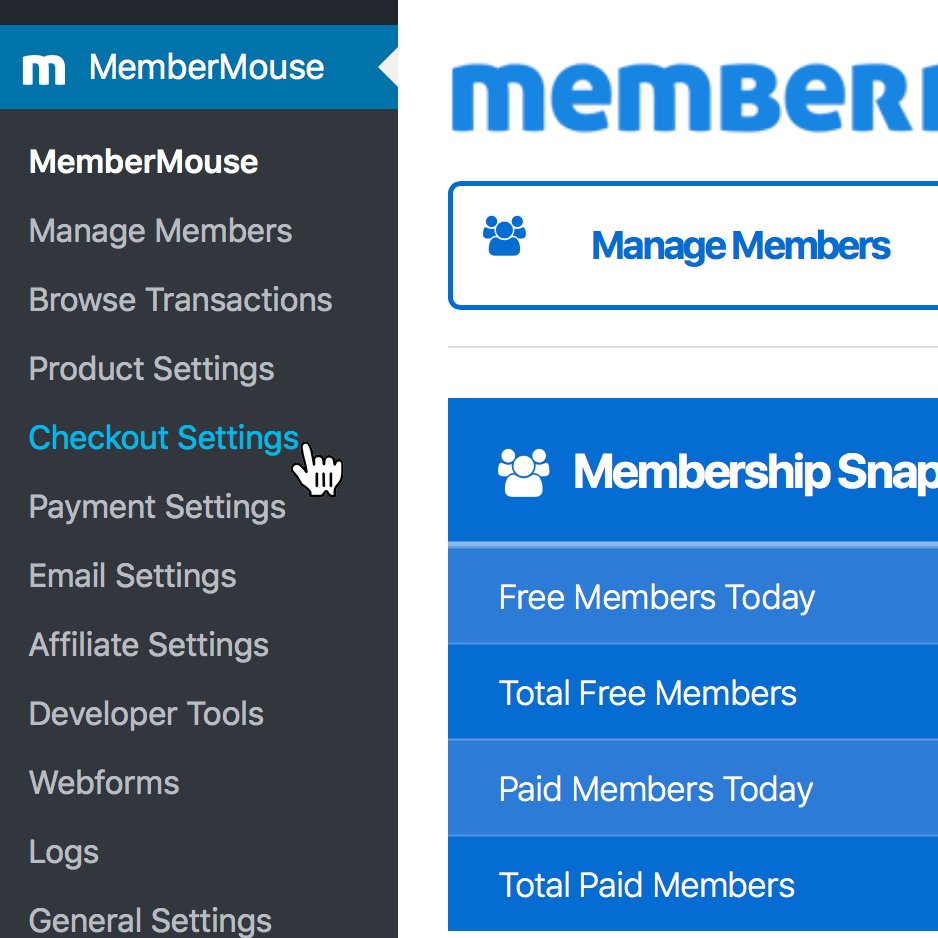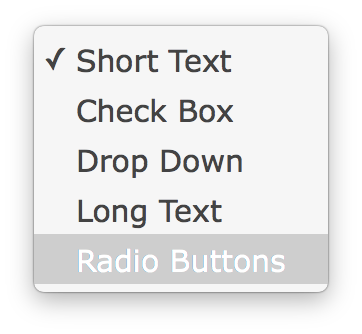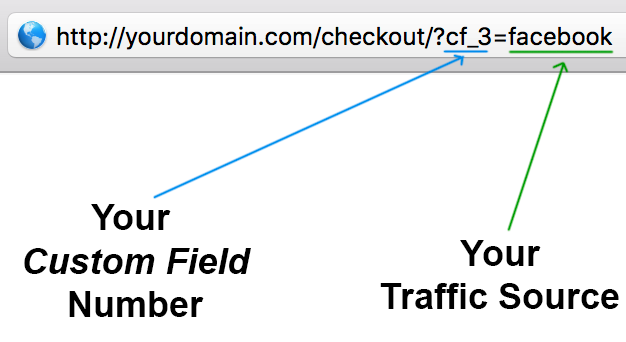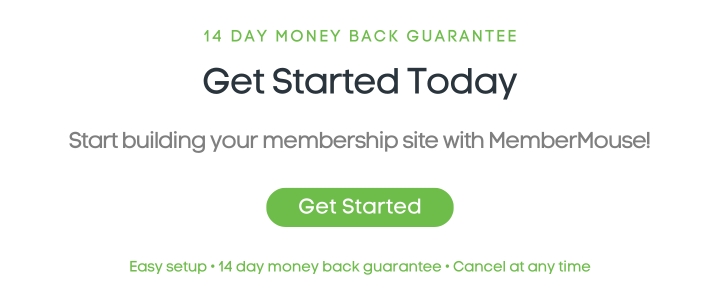A Crash Course in Member Segmentation
This post on strategic member segmentation was inspired by one of our customers Jordan McAuley. He recently shared a practical tip with us about how he uses the MemberMouse feature Custom Fields to intelligently segment his members. When we heard Jordan’s strategy, we thought it was too good not to share with you.

Jordan McAuley
Here’s what Jordan had to say about member segmentation:
“Something I like about MemberMouse that I couldn’t do before is segmenting my customers. Here’s a tip for people: on the checkout form create a custom field. For me, when a new member joins my site, I ask them ‘What do you do?’ so I know whether they are an author, a non-profit, a small business, a real estate agent, or a journalist. This information then gets plugged into MemberMouse. It really helps when I’m working with my customers because I can see who they are and better communicate with them. And, whenever I look at my total members list, I can see what percentage are in each category. It’s so easy to create a custom field and put it on the checkout page as a dropdown box.”
There are so many reasons why you should implement a member segmentation strategy. If you’re not currently segmenting your members, it’s possible you’re missing out on some valuable opportunities. After you read this article you’ll know exactly how to segment your members based upon any criteria you can define AND why you should do it.
But first things first…

What is segmentation?
Segmentation is really just a fancy word for division. When you hear someone say “I segmented my email list…” or “We have three main customer segments…”, what they mean is that they’ve divided up their customers, market, or email subscribers into groups based on distinct and important attributes. The way in which you segment your members will depend entirely on the specifics of your business.
For instance, if you primarily serve customers in three countries, you could segment your customer list into people who live in the United States, Australia, and the UK. Segmenting your customers by demographics is a very common practice and makes sense for many reasons.
At the end of the day, segmentation is simply the process of organizing your members into categories that are meaningful to your business. This way, you can understand who your members are, what is important to them, and communicate directly to each group of people.
Why should I segment my members?
Great question.
What do we gain by segmenting our customers? In the context of a membership or subscription site, the benefit of segmenting your members is clarity. When you define and determine segmentation categories that are meaningful for your business, you'll be able to better understand who your members are and where they are coming from.
Once you have your members meaningfully divided up and organized, you'll then be able to effectively communicate with them based on these criteria. The truth of the matter is that one-size-fits-all marketing and communication simply doesn’t work. It’s bland and ineffective. The more personal you can make your communication, the more likely it is that your message will stand out and resonate with your members.
If one-size-fits-all marketing and communication is a disease, smart member segmentation is the cure. When you have clearly defined member segments, you can communicate with your members in a highly personalized way. This will help you build rapport and trust with your members. We’ll dive deep into this topic later in the post and show you how to implement a segmentation strategy on your site. But first, you need to understand what can happen if you do nothing and treat all of your members the same.
What happens if I don't segment my members?
Four words: Deaf Ears, Business Blindness
You know the feeling of getting a message from a business or someone you know that clearly wasn't designed for you. Impersonal messages are cold and alienating. Bland, one-size-fits-all communications just go in one ear and out the other. When you don't include any information that's relevant to the audience you're speaking to, your message will likely fall on deaf ears or worse… be ignored all together.
Another dangerous pitfall that comes with ignoring a segmentation strategy is that you can lose track of who your members are and where they’re coming from. Once you grow your audience and your business, it's essential to understand how people come to you. Otherwise you can end up feeling like an island surrounded by fog. Sure, people may be landing on your shores, but how on earth did they find you?
Worst of all, if you aren't able to communicate with your members in a way that shows you understand them, they may start looking for other people or solutions that do.

A Concrete Example
To help illustrate the point, let's take a look at a concrete example:
Say that you run a membership site focused on helping people lose weight. Imagine that you live and operate your business in the United States. And about 50% of your members also live in northern hemisphere countries like the US and UK. However, the other 50% of your customers live in southern hemisphere countries like Australia, New Zealand, and South Africa.
Now, picture that you have created a course about how to lose weight and keep it off specifically in the winter months. You know that with all of the holidays and tendency towards sedentary behavior, your members can use some extra help with their weight loss goals in the winter months. So, you create your course and make an offer to your members. You send some emails about your winter weight loss course and display the offer on your members' homepage. But then a strange thing happens… you notice that only about 50% of your members are interacting with your special offer.
Without a segmentation strategy in place, you failed to realize that for 50% of your members, the winter months in the US & UK are actually summer months in countries like Australia and New Zealand. Why would someone who is about to head to the beach for a day of swimming and soaking up the sun be worried about packing on a few extra pounds during the winter? Exactly! They wouldn't be.
But, with a simple member segmentation strategy in place, you could schedule the very same offer to be made to your members who live in the southern hemisphere when June, July, and August roll around. That way when the cold creeps in, and the temptation to reach for an extra cookie pops up, your winter weight loss program could be there waiting for them. Right place, time, message, and member.
7 Creative Ways You Could Segment Your Members
When it comes to member segmentation, you of course have all the standard categories:
- Demographic information like age, gender, marital status, etc.
- Geographic information like city, state, country, urban, rural, etc.
- Consumer information like spending patterns, purchase history, financial status, etc.
Out of the box, MemberMouse automatically collects and stores a lot of data associated with your members, such as first name, last name, email address, phone number, etc. But for your business, you may be interested in collecting and storing additional information for your members. This is where Custom Fields come in.
What's great about using Custom Fields to segment your members is that you can sort and organize your members based on any criteria you can imagine. That's right… anything!
To get your imagination and creativity flowing, here are 7 creative ways you could segment your members based upon different niche markets:
1. Weight Loss
You could ask your members how much weight they'd like to lose and create different segments:
- 10 lbs
- 20 lbs
- 50+ lbs
Then you could sort and organize your members and check in with them about their specific goals:
- Message: How close are you to losing that 10 lbs…
2. Getting Out of Debt Education
How much debt do you have?
- $10k
- $20k
- $50k+
- Message: Let's erase your $20k in debt
3. Digital Marketing for Medical Professionals
What industry are you in?
- Dentistry
- Optometry
- Family Practice
- Message: Attention: Dentists
4. Expat Retirement Strategies
Where is your ideal retirement location?
- Central & South America
- Eastern Europe
- Southeast Asia
- Message: Ready to retire? Here's a hidden gem in Croatia
5. Plant Based Recipes & Nutrition Info
Are you…
- Vegetarian
- Pescatarian
- Vegan
- Message: The perfect recipe for salmon lovers
6. Online Wine Education
If you had to pick ONE wine to drink for the rest of your life, what would it be?
- Pinot Noir
- Champagne
- Riesling
- Message: For Pinot Lovers Only…
7. Gentle Exercise for Seniors
What hurts the most when you exercise?
- Knees
- Lower Back
- Neck & Shoulders
- Message: The best exercise for knee pain
And those are just a few examples. The possibilities for Custom Field segmentation are truly endless and only limited by your imagination and members' willingness to participate.
Ok… How do I do this?
By now, the benefits and advantages of member segmentation should be clear. The way you can implement a member segmentation strategy is to use our powerful Custom Fields feature. Let’s get down to brass tacks and show you exactly how you can implement this on your site.
As we get started, it’s important to understand exactly where you can use Custom Fields on your website. Custom Fields can be embedded and displayed anywhere on your website, but are most commonly used in three places:
Next, go ahead and create a Custom Field based on the criteria you’d like to use to segment your members. For our example, we’ll go back to our weight loss membership site:
-
- In the MemberMouse menu, click Checkout Settings and then click on the Custom Fields tab.

-
- Click Create Custom Field

-
- Choose a name for your Custom Field (in our example we used Weight Loss Goal)

-
- Choose whether you’d like this information to be displayed on your members’ My Account Page
- Choose the Type of Custom Field you’d like displayed (Short Text, Check Box, Drop Down, Long Text, Radio Buttons)

- Fill in your criteria for the different options
- Click Save Custom Field
And boom! There you have it. You’ve just created your first Custom Field. Easy as pie, right?
Now, you can display this Custom Field for your members anywhere on your website. It can be filled out on the checkout page, your free member signup form, on a 3rd party site, or anywhere else you like to use a Custom Field by creating a form. For more information, be sure to check out the documentation from our support center.
Hidden In Plain Sight: An Overlooked Segmentation Strategy
Remember at the beginning of this post how we talked about using member segmentation to understand exactly where your members are coming from? Well, as a reward for sticking with us and reading this entire article, we’re going to reveal a little-known strategy for segmenting your customers via traffic source using Custom Fields.
For this example, let’s say that you want to be able to see how many of your members arrived to your site through Facebook, via Instagram, or other means such as a banner ad. This information is easily obtainable using hidden Custom Fields.
So, take a deep breath, clear your mind, and get ready for this…
With Custom Fields you can choose to set the type attribute to custom-hidden. When you do this, the Custom Field won’t be displayed for your members to see, but it can still collect and store information. Since we want to gather information about where your members are coming from – meaning, their traffic sources – you would use a MemberMouse form code-snippet like this to gather this information:
[MM_Form_Field type=”custom-hidden” id=”3” isRequired=”false”] [/MM_Form_Section]
Then you would pass data to the checkout page via the URL and the information would be captured by the Custom Field.
Here’s how to do it:
- Create a Custom Field
- Identify each traffic source you’d like to track
- Create URLs for these traffic sources following this format:

(Or: http://yourdomain.com/checkout/?cf_3=instagram, etc.)
Now, wherever you would display a link to your homepage, checkout page, landing page, etc. simply use the link that matches the traffic source you want to track. So, you would use the Facebook link on Facebook, the Instagram link on Instagram, etc.
This traffic source information will then be stored in your member’s account under Custom Field Data. Once acquired, you will then have the ability to use that information to segment your customers based on traffic source. As a result, you’ll have a clear understanding of where your members are coming from and which traffic sources are most effective for your business.
What’s Next?
Now it’s time to implement what you’ve learned in this post. How could you organize and segment your customers in a way that enables you to better communicate with them AND gives you more visibility into your business? What meaningful categories already exist within your membership that you could officially implement using Custom Fields? Our hope is that this post has inspired you and shown you how easy it is to implement a powerful member segmentation strategy on your site.
If you’ve had success segmenting your members, we’d love to hear from you. Leave us a comment below and share your story with us.
Matt Brown
Over the past 6 years, Matt Brown has worked closely with some of the world's most successful membership and online course entrepreneurs. He's seen first hand what works – and what doesn't – when it comes to starting, building, and growing online businesses. On top of that, Matt was responsible for screening all the guests we've had on the Subscription Entrepreneur podcast. This allowed him to hear the best membership marketing and growth strategies from top authors and experts. Now, he shares everything he learns with you here on the MemberMouse blog. Subscribe today so you can discover cutting-edge strategies that can help you grow your membership, subscription, and online course business.
 Blog
Blog Podcast
Podcast Support
Support Customer Login
Customer Login









